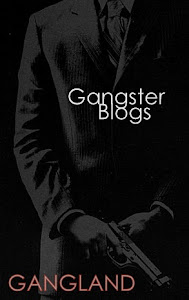
There are still major gangs operating in the city—the Latin Kings, the Vice Lords, and the Insane Deuces—along with many smaller gang factions. They don't control territory like inner-city gangs. Instead, they usually run drugs out of ordinary-looking homes and businesses. Unlike inner-city gangs who frequently dabble in protection rackets, the gangs here generally leave local businesses alone. Part of the reason for that, law enforcement officers say, is that Aurora's retail scene consists mostly of big-box stores and national franchises rather than mom and pop establishments, which are more susceptible to extortion.
Nationwide, gauging the true scope of the gang problem is difficult, chiefly because law enforcement lacks a common definition of a gangster or what makes a particular crime gang-related. The FBI estimates that there are about 785,000 gang members in the country belonging to some 26,500 different gangs in 3,400 communities. That estimate excludes outlaw motorcycle and prison gangs. Even more troubling, a third of all communities say they have no gang problem when they actually do. It's a denial bred from either fear or stigma, according to the FBI.The thousands of active gangs around the country each have their own signs, lingo, and culture. Drug dealing and gun violence are common denominators, but each behaves differently depending on its location. In the Northeast, for instance, there's been a rise in the number of neighborhood and hybrid gangs composed of members of several different organizations. Around Washington, D.C., and its Maryland and Virginia suburbs, meanwhile, the Latin American gang MS-13, best known for attacking its rivals with machetes, has become a particularly tough problem. There, cocaine and marijuana are the main drugs moved through gang networks.In the Midwest, the amount of gang activity around college campuses and schools is on the rise. Hispanic gangs are using Native American surrogates to move drugs onto Indian reservations, where gang activity is also on the rise. And out West, street gangs are diversifying their criminal portfolios to include identity theft while continuing to supply narcotics, mostly methamphetamines and marijuana. Gangs in the West are also most likely to partner with organized crime, particularly the Mexican drug cartels and the Asian mafia.Wherever they operate, gangs are increasingly turning to computers and the Internet. Often behind password-protected sites, they post photo-graphs of their own gang signs, colors, and tattoos. Police even report that some gangs are using their websites to take positions on local political issues. In fact, sites like MySpace, Facebook, and YouTube have become quite useful to police gathering intelligence or investigating specific crimes. "Some gang members in Maryland are not too bright, and they will often post pictures of themselves and their gangs online or shoot videos of themselves defacing property or committing other crimes," says Charles Rapp, director of the Maryland Coordination and Analysis Center, which helps scour open-source information for law enforcement agencies. For their part, the gangs sometimes post misleading information to fool police or rival gangs about potential meetings or activities.Yet despite all their bravado, at their essence the gangs remain fraternities of lawlessness, replenished with scores of young men from troubled neighborhoods in the name of belonging, enterprise, or necessity. "The pervasiveness of gangs throughout society is undeniable," the Justice Department concluded in its latest National Gang Threat Assessment in 2005. "As they migrate across the country, they bring with them drugs, weapons, and criminal activity."
Gangs are, however, also vulnerable because of their insatiable demand for guns, a weakness that federal officers are learning to exploit. Put simply, they are always looking for more guns to protect themselves and their illicit merchandise. Ammunition is also often in low supply for street gangs. Most gangsters use guns only once. They know that after a crime, the ATF enters the bullets or shell casings into databases to trace them. "Gangsters watch shows like CSI as homework and watch History Channel documentaries about gangs as research," says one veteran gang investigator. Guns are also lost, seized by the police, or broken during normal use. "Gangs will try to have enough guns for each full member to have access to one, though they also share between themselves," says Jared Lewis, a retired cop from the Modesto, Calif., antigang task force who now researches street gangs. Fortunately, that makes them easier targets for undercover operations. Add to that stricter laws under which those caught with guns and drugs face harsh sentences, and the effects are starting to be felt.














0 comments:
Post a Comment